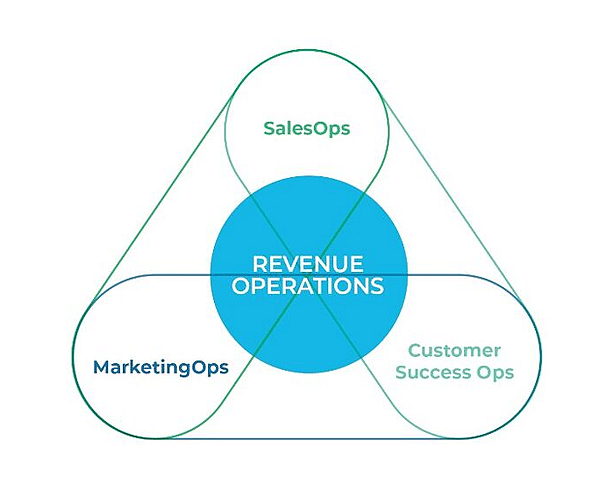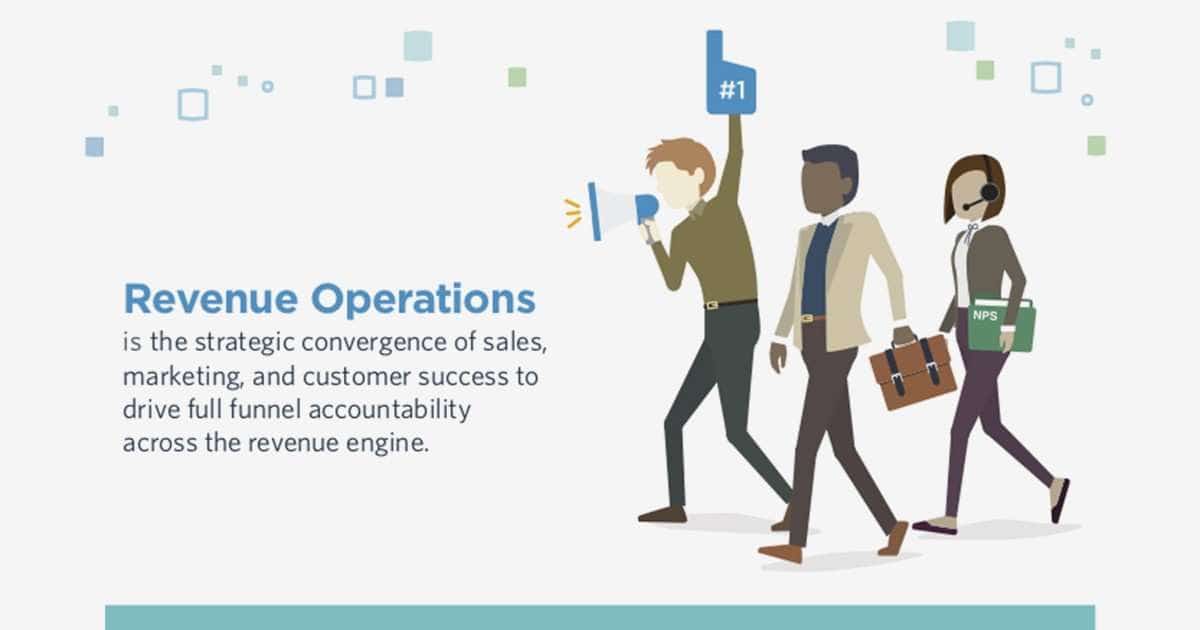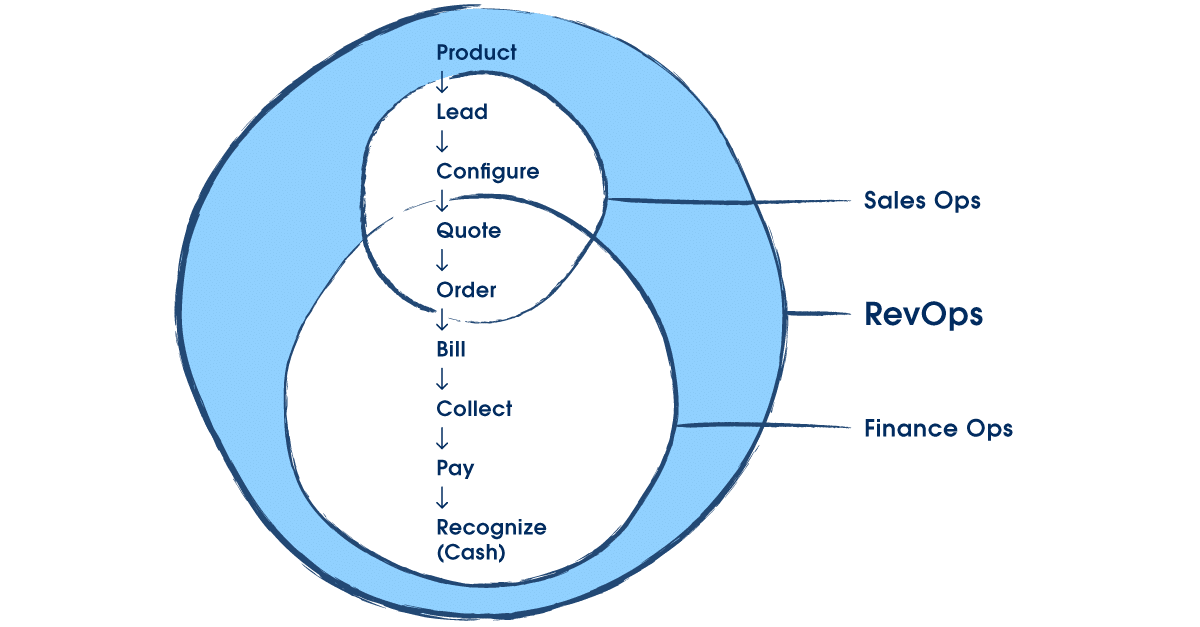RevOps: Revenue Operations Strategies and Tools for 2022
The start of the 21st Century saw the rise of a fragmented approach to running businesses. Every business function was run using a different strategy to achieve the maximum level of return.
Technology aided this approach as many software solutions were born that specialized in aiding a single business function. While this approach worked amazingly but with so many factors, a lack of cohesiveness became apparent as different functions were working independently and were not collaborating as often as needed, keeping in pace with how customer buying behavior changed.
This disconnect fueled the rise for a better approach that eliminated operational silos. This need for aligning all business processes with a common objective of growing revenue gave rise to revenue operation.

Source: hubspot.com
Revenue operation aims to align sales, marketing, customer success, and software so they can work in unison to grow a business’s revenue. This is one important reason why a lot of B2B businesses have been adopting this approach lately.
Let’s dive deeper and understand what RevOps is and how it works.
What Is Revenue Operations?
Revenue operations is a new operational approach taking roots in the B2B sector that aligns marketing, sales, customer success, and software throughout the full customer lifecycle with a common objective of growing revenue.
RevOps leverages operational synchronization and the efficiency resulting from it to lower costs and boost productivity in a way that directly translates into revenue growth.

Source: marketingprofs.com
This approach makes every business operation accountable for growing the firm’s business and effectively its revenue. A well-deployed and run RevOps team will enable every revenue-generating area of a business to grow its performance and operate smoothly together.
Hold on a second! Doesn’t this whole thing sound similar to Sales Operations? Let’s dig deeper to understand the differences.
Revenue Ops Vs Sales Ops: The Devil’s In The Details!
Starting with sales ops, this is a team that undertakes several activities to aid the B2B sales process. The aim here is to raise the efficiency and productivity of sales representatives which will drive predictable revenue growth.
Now isn’t that the aim of revenue operations too? To drive predictable revenue growth?
Technically, the answer is a yes. However, the difference is in the scale at which both these approaches function.
The improvements gained from implementing sales operations are limited to the B2B sales team. The scope of improvements possible with revenue operations is not limited to a single business function but encompasses all revenue-generating business areas.

Source: salesforce.com
While sales ops mitigate the friction within the sales team so they can spend more time selling, revenue operations do the same for the entire revenue-generating section of a business. This means the entire organization can be effective at what they do.
Thus, sales ops are limited to the B2B sales team while revenue ops is an end-to-end solution, i.e. its scope ranges from product to payment.
Job Of Revenue Operations Leaders.
The revenue operations leader has three key responsibilities. Those are:
1. Consensus Building
Implementing revenue operations in a firm means completely overhauling not just the structure but operations of the firm. This can cause a lot of transitional friction or inertia.
As a good revenue operations leader, one has to ensure they build a consensus among all teams and members of the firm about the need for such a radical transformation. Once everyone is onboard, deploying revenue operations is easy.
2. Creative Problem Solving
The real world is not an ideal playground and operations leaders cannot expect to get everything they need on time and in the manner they need. Sometimes the funds aren’t allocated while in some instances the software isn’t exactly as per the needs.
In such scenarios, the revenue operations leader must utilize creative problem solving to navigate around the problem and keep the organization functional.
3. Enablement and Education
A revenue operations leader is the de facto technical and thought leader for the operations. As a result, not only is it his responsibility to enable and educate the other team members about the technical side of using software and all but also about how everything is supposed to work.
Now that we understand what revenue operations is and how RevOps can be implemented, here are some tools that can help you with it.
Top 5 RevOps Tools
1. Salespanel
Starting with our own product, Salespanel. It helps you connect sales and marketing operations by syncing customers and their data seamlessly between each department.
Connect Lead Acquisition Funnel To Your CRM
Salespanel automates the process of collecting leads from various acquisition funnels and transferring them into your CRM. As soon as the leads enter the pipeline, they’re collected in your CRM in real-time.
Sync Lead Intelligence Between All Teams
Salespanel enables you to have all your teams be updated in real-time with any and all interactions a lead has with various touchpoints.
Qualify And Score Leads And Update Your Sales Team
Leads can be scored and qualified using a predictive or a rule-based framework. Your sales team will have access to lead scores that are updated in real-time for changes. If you are focusing on product-led growth.
Instant Notifications When Leads Show Strong Intent
Salespanel will instantly notify your sales team when a lead qualifies as an MQL or when a lead exhibits high intent actions. It also uses predictive modeling to understand which leads are more likely to buy.
Closed-Loop Reporting Helps Connect Marketing Campaigns With Revenue
Instantly create reports and have marketing touchpoints attributed for revenue generation. With select CRMs like Pipedrive, you can create a two-way data sync workflow to unify data from sales and marketing verticals.
Salespanel is a great tool for alignment if you want to get a grip of the entire customer journey and pass data between sales and marketing.
2. Outreach.io
Outreach.io is a RevOps platform that maximizes visibility in four key components that assist sales and marketing to solve the issue of the disconnect between the two and increase their efficiency.
Centralized Communication
It centralizes all communications to and from a contact. You can email, leave voicemail, text to a prospect, all from one place within the platform.
A Full-Time Assistant
Outreach.io analyses all the data available in your CRM and external databases about prospects to arm your sales reps with all the necessary insights while contacting leads of existing clients.
AI-driven Knowledge
Using its AI engine, Outreach.io prompts the users of the platform with the best actions to take during day-to-day operations. An example of this would be recommending a more suitable time to send an email to maximize open rates.
Campaign Projection and Testing
It can run scenarios of different campaigns and approaches to test which strategies will be best suited to approach a prospect. This can help sales reps make adjustments to strategies before making a pitch.
3. Clari
Clari enables businesses to translate strategic goals into superior performance and to transform your sales team into unstoppable revenue machines using their RevOps platform. How? They focus on three areas:
Real-Time Data
Clari gathers data from all data points in your business and from all the business software you might be using and updates and validates it in real-time. By bringing all the data together, all team members have a clear view of their accounts.
Actionable Insight-Driven By AI And ML
Clari’s AI and ML algorithms utilize the centralized and updated database to churn out risks and insights into various opportunities. These insights can help users make better-informed decisions and exploit profitable opportunities quickly.
Accurate Forecasting Driven By AI
A database that is updated and validated in real-time and insights based on that achieved through AI and ML enable Clari’s AI to process different scenarios and run predictions to come up with accurate forecasts. This provides more visibility into the pipeline in terms of how much revenue it holds.
4. Lean Data
LeanData is another popular RevOps platform that helps organizations clean and organize their data to produce actionable insights, provide clarity and align sales and marketing processes. They make this possible through three main components.
Intelligent Routing
With Lean Data’s intelligent routing, delays are eliminated. You can set rules, customize workflows to ensure the leads reach the right team as soon as they enter the sales funnel.
You can view the routing graph which enhances clarity and transparency between all the teams of a business resulting in smoother workflows and operations.
Data Matching
Lean Data’s data handling capabilities are exquisite. Their data matching function not only keeps all your data organized and updated but reduces any forms of redundancies and data duplications.
Contacts can be effortlessly paired to relevant accounts making work easier. The entire database is available across teams and can be used for various operations.
Engagement
Lean Data has a central dashboard that users can use to gain a comprehensive view of all activities of a contact or an entire account. All data is available at one place irrespective of where the data originated from.
5. Openprise
Openprise automates all your revenue operations from a single no-code platform so that your teams can have more time for undertaking more productive tasks. With the data handling capabilities of Openprise you will generate and convert leads faster.
Data Management And Normalization
Enterprise ingests data from all possible input points and creates a single data repository that can be accessed by everyone. Data is cleaned, validated, updated in real-time and processed to generate actionable insights.
Data Orchestration and Routing
The Data Orchestration feature in Openprise allows users to choose ingestion points and route data to various teams in a customized manner. All this can be done without a single line of code making Openprise vastly user-friendly.
Sales Automations
Lead and account scoring, qualification, assignment, etc. and other processes can be automated effortlessly. You can structure account hierarchies, assign priority, plan territories, assign partner deals, etc. from a single place.
Conclusion
With data-driven online marketing becoming key to driving revenue, RevOps is now more important than ever. And, it is something your business must consider if you want multiple departments working as one cohesive unit to drive revenue.
The transition can be made easier by hiring an experienced revenue operations leader and finding the right RevOps tools to get you to hit the ground running.
Sell more, understand your customers’ journey for free!
Sales and Marketing teams spend millions of dollars to bring visitors to your website. But do you track your customer’s journey? Do you know who buys and why?
Around 8% of your website traffic will sign up on your lead forms. What happens to the other 92% of your traffic? Can you identify your visiting accounts? Can you engage and retarget your qualified visitors even if they are not identified?


